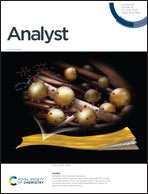Handheld FTIR outperforms total organic carbon swab in pharmaceutical cleaning validation
Abstract
Cleaning Validation is a crucial process in pharmaceutical manufacturing, as it verifies that cross-contamination levels are below acceptable limits. The use of Mid-Infrared (IR) spectroscopy has long been proposed as a rapid method enabling real-time release, but only with the recent emergence of a handheld Fourier-Transform IR (FTIR) does a feasible solution exist for practical implementation in pharmaceutical manufacturing plants. This paper address the model development challenges for multi-product plants without complete traceability of production equipment and produced product. This is done by developing a partial least squares discriminant analysis model determining if the sample is clean or not clean compared to a residual acceptance limit, based on total organic carbon (TOC) measurements. The model is built and tested on artificial samples printed with a chemical printer for multiple products with different spectral peaks based on 91 samples in the calibration set and tested on 30 samples in the validation set. Furthermore, the model also incorporates spectra from surfaces with different surface roughness. The evaluation of the model is based on sensitivity, specificity and class error. The model outperforms or performs equally well as TOC swab with sampling error, dependent on the sampling error distribution for the TOC swab.



 Please wait while we load your content...
Please wait while we load your content...